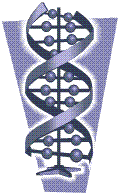 Time (Nov 28, 2009) -- At first it sounded like science fiction, curing genetic diseases by giving people new genes. Then it seemed like simple fiction: while theoretically possible, gene therapy appeared unlikely to become a true therapeutic option, the field having suffered years of complications and high-profile setbacks. But over the past year, a series of small but intriguing advances has suggested that the technique may hold real future potential.
Time (Nov 28, 2009) -- At first it sounded like science fiction, curing genetic diseases by giving people new genes. Then it seemed like simple fiction: while theoretically possible, gene therapy appeared unlikely to become a true therapeutic option, the field having suffered years of complications and high-profile setbacks. But over the past year, a series of small but intriguing advances has suggested that the technique may hold real future potential.In September, researchers at the University of Washington reported in the journal Nature that they had produced color vision in squirrel monkeys, which are normally born colorblind. Using a tiny syringe, researchers injected the single missing gene for color vision into the monkeys' eyes. The result was clear: monkeys that previously could not distinguish red, green and gray were easily able to pass a simian equivalent of a color-detection test. (See the top 10 medical breakthroughs of 2008.)
Another study published in the Lancet in October found that gene therapy had restored partial vision to five children and seven adults with a congenital eye disease that causes blindness. And a paper published earlier this month in Science reported the successful treatment of two children with ALD, or adrenoleukodystrophy - a neurological disorder that leads to progressive brain damage and death in two to five years.
By ADI NARAYAN
To view the entire article. please click on the link above.
No comments:
Post a Comment